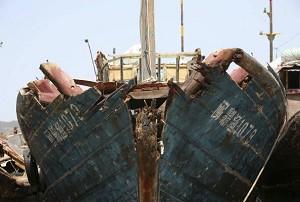BEIJING—China has denied covering up casualties from natural disasters as the official death toll from the strongest typhoon to strike the country in half a century rose to 330, a number residents says is greatly understated.
Saomai, graded a “super typhoon” with winds exceeding 216 km (134 miles) per hour, barrelled into China’s southeast coast last Thursday, flattening tens of thousands of houses, overturning ships and damaging infrastructure.
The hardest hit was the coastal town of Shacheng in Fujian province, where about 1,000 of the more than 10,000 ships which returned harbour before Saomai’s arrival capsized and hundreds of fishermen died or went missing.
A total of 186 bodies had been recovered from waters off Shacheng and dozens were still missing by Thursday, Xinhua news agency said on Friday.
But angry residents claimed the death toll could be as high as 1,000 and accused the government of failing to offer adequate warning before the typhoon struck, Hong Kong’s South China Morning Post reported.
Afraid of punishment from superiors, local officials in China have a record of covering up or underplaying bad news on disasters, accidents and epidemics.
But Wang Zhenyao, disaster relief chief under China’s Ministry of Civil Affairs, denied any attempts to cover up the scale of the damage.
“Local officials don’t have to lie about death tolls from natural disasters as they don’t bring them liabilities like coal mine accidents do,” Xinhua quoted him as saying on Thursday.
China has the world’s most dangerous coal-mining industry and local officials have been accused of colluding with mine owners to conceal fatal accidents which happen on an almost daily basis. Wang cited China’s declassification of natural disaster death tolls as state secrets last year and other “institutional checks” against cover-ups, Xinhua said.
Wang said poor communications and a growing migrant population hampered an accurate account of disaster casualties.
The overall death toll for Fujian now stood at 241, bringing the total number of people killed by Saomai in China to 330, Xinhua said.
Much of south China has been repeatedly battered by typhoons and tropical storms this year, with nearly 1,000 killed by rainstorms, landslides and other disasters they brought even before Saomai hit.
Local officials in a county in the central province of Hunan, where almost 200 people died in floods triggered by tropical storm Bilis last month, were accused of initially understating the death toll by several times.






Friends Read Free